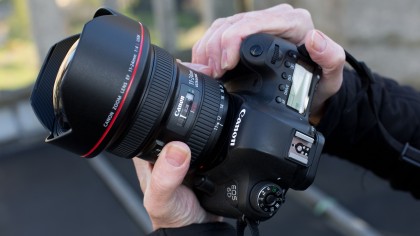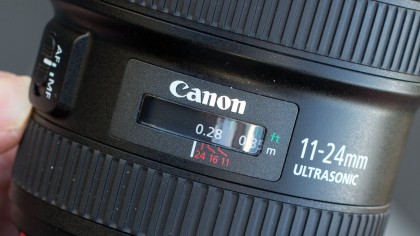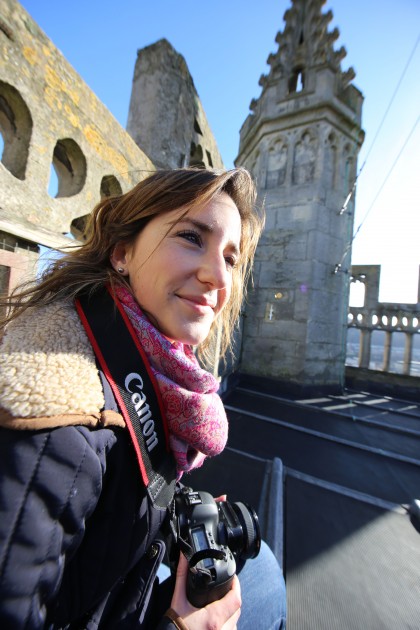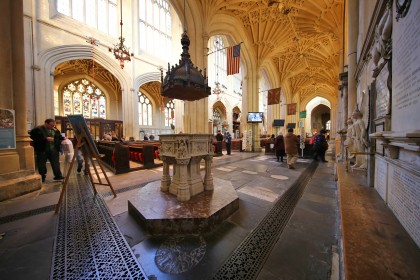Early Verdict
This has few rivals – only the often-overlooked Sigma 12-24mm comes close. The Canon 11-24mm is expensive, but it delivers an extraordinary angle of view and could prove a key lens for architectural photographers.
Pros
- +
The widest angle of view ever for a non-fisheye! Good distortion control
Cons
- -
Large front element can be cumbersome Price
Why you can trust TechRadar
We first mentioned the new Canon 11-24mm f/4L lens in our Canon EOS 5Ds news. Not surprisingly, Canon's new 50-megapixel DSLR has been stealing all the headlines, but in its own way this new lens even more ground-breaking.
If you own an APS-C format camera you might think the specs are nothing special. There are plenty of ultra-wideangle lenses in this zoom range for APS-C cameras.
But this is a full-frame lens. This explains the monster-sized front element and the monster-sized price tag – £2,800/US$3,000 (about AU$3,850). Even so, we reckon that this lens will be in such demand amongst professional photographers that Canon might not be able to make enough of them.
Key specs
Angle of view: At the 11mm setting, this lens gives an angle of view of 126 degrees (diagonal). This compares to 122 degrees for the next-widest lens, Sigma's 12-24mm f/4.5-5.6 II. Nikon's near-legendary 14-24mm f/2.8 has a widest angle of view of 114 degrees.
Weight: The Canon 11-24mm is pretty heavy, at 1,180g (41.6oz). The Sigma is a lot lighter at 670g (23.6oz), but it's a less ambitious variable-aperture lens. The Nikon 14-24mm is not far behind the Canon, weighing 1,000g (35.3oz), but it's a whole f-stop faster, with a constant f/2.8 maximum aperture.
Maximum aperture: The Canon 11-24mm has a maximum aperture of f/4 throughout the zoom range, which beats the Sigma 12-24mm's variable maximum aperture of f/4.5-5.6. The Nikon 14-24mm trumps them both, though, with a constant f/2.8 maximum aperture.
Closest focus: The Canon 11-24mm has a closest focus distance of 0.28m (11 inches), exactly the same as the Sigma 12-24mm and Nikon 14-24mm. The closest focus distance is actually quite significant – more on this shortly.
Sign up for breaking news, reviews, opinion, top tech deals, and more.
How it handles
This lens looks as if all the weight is going to be at the front, but actually it's quite well balanced. We tried it on a Canon EOS 6D, which is Canon's 'lightweight' full-frame camera, and it felt fine.

The width of the front element can be a problem, though, if you're trying to shoot through narrow gaps in walls or fencing, and you'd have to be careful not to knock it against door frames or walls if you're carrying the camera over your shoulder.

The lens hood is permanently attached and does offer some protection for the giant, bulbous front element, but you still need to be careful not to get sticky fingermarks on the glass and it's a huge surface area for attracting raindrops.

The zoom and focus actions are smooth, and the autofocus is quiet too. You might think there's not much need for focusing with a lens this wide, but if you're getting right up close to an object to emphasise its size against the background, it does actually become very important.
Sample images
This lens doesn't just offer an exaggerated angle of view – it also exaggerates the optical side-effects of wideangle lenses in general.






Rod is an independent photographer and photography journalist with more than 30 years' experience. He's previously worked as Head of Testing for Future’s photography magazines, including Digital Camera, N-Photo, PhotoPlus, Professional Photography, Photography Week and Practical Photoshop, and as Reviews Editor on Digital Camera World.
What is a hands on review?
Hands on reviews' are a journalist's first impressions of a piece of kit based on spending some time with it. It may be just a few moments, or a few hours. The important thing is we have been able to play with it ourselves and can give you some sense of what it's like to use, even if it's only an embryonic view. For more information, see TechRadar's Reviews Guarantee.
